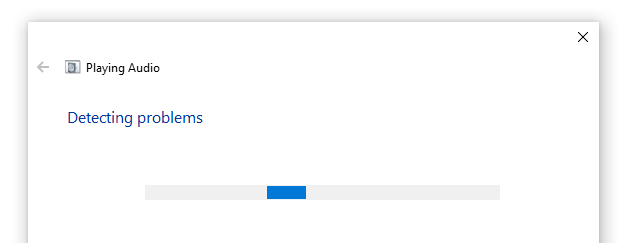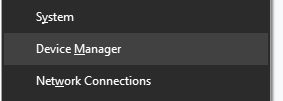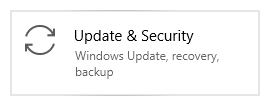Many Windows 10 users, especially those who use HP or Dell laptops and PCs, run into an error that says “No Audio Output Device is Installed.” This means that you’re unable to listen to any sound on your computer, making it hard to relax or potentially do your work.

The error usually shows up with a red cross symbol next to the audio control in the system tray.
In this article, we’ll be sure to help you learn more about this error, and show you the most effective ways to troubleshoot it. Continue reading to find out how you can fix the “No Audio Output Device is Installed” error.
Causes of“No Audio Output Device is Installed” error?
Just like most Windows 10 errors, it’s quite hard to pinpoint only one source for your audio not working properly. However, we were able to collect some of the most common causes for this error, which may help you identify why you’re unable to hear any sound on your device.
Here’s a list of reported cases from various Windows 10 user reports. Keep in mind that your issue can be unique, and there may be many more causes for this error not mentioned below!
- A major Windows 10 update rolled out. You wouldn’t expect it, but one of the major causes for errors on Windows 10 is the updates themselves. While they bring many new features, security patches, and more goodies, they can also mess your system up.
- Your audio drivers are damaged or outdated. Drivers are core parts of your device, as they make the functionality of connected devices possible even if they aren’t from Microsoft. If your audio devices are messed up, you most likely won’t be able to properly use them.
- Your playback device has been disabled. It’s possible that you or another source has disabled the playback device you’re trying to use. This means that audio will not be playing from the device as Windows 10 doesn’t recognize it. This may be causing the “No Audio Output Device is Installed” error.
- Your playback device isn’t connected to the right port. If the port you’re using is damaged or not configured to be used on your system, the device you plugged in it won’t function as intended.
- Your wireless device isn’t paired with your computer. Every piece of wireless technology needs to be properly connected with your computer in order to be used. Make sure that you’ve gone through the proper connection process if using wireless headphones, earbuds, or speakers.
Now that we’ve taken a look at some possible causes, it’s time to get to work. Below are several methods used for troubleshooting the “No Audio Output Device is Installed” error on Windows 10.
Tip: All of these methods can be performed by anybody, as our guides are easy to follow and don’t require any previous Windows 10 experience. If you know anyone who’s experiencing issues with their system, don’t forget to recommend us!
Let’s start.
Method 1: Use Windows 10’s audio troubleshooter
Windows 10 comes equipped with multiple troubleshooters that specialize in finding and resolving issues on your device. Luckily, the one used for getting rid of audio-related errors is readily available on your computer without the need to download a single file.
Here’s what you need to do to run the Windows 10 audio troubleshooter.
- Right-click on the volume icon in your system tray, then click on “Troubleshoot sound problems”.

- Wait for the troubleshooter to detect issues. If anything is identified, you’ll be able to fix it with the click of a button.

- Test if your audio works now.
Method 2: Update your audio driver
It’s important to keep your drivers up to date no matter what. They allow your computer to handle third-party equipment and are a core part of your system. If you’re experiencing the “No Audio Output Device Is Installed” error, it might be because of your audio drivers.
Here are the steps to follow to update your audio driver on Windows 10.
- Press the Windows + X keys on your keyboard and click on the Device Manager option from the menu.

- Expand the Sound, video and game controllers menu by clicking on the arrow next to it.
- Right-click on your audio device listed in the menu and choose Update Driver.
- Allow Windows 10 to look for the newest driver on your local computer or online, then follow any on-screen instructions.
Method 3: Manually uninstall your device’s driver
If the update didn’t work, we recommend manually uninstalling and allowing Windows 10 to re-install your audio driver. Here’s everything you need to do.
- Press the Windows + X keys on your keyboard and click on the Device Manager option from the menu.

- Expand the Sound, video and game controllers menu by clicking on the arrow next to it.
- Right-click on your audio device listed in the menu and choose the Uninstall device option.

- Restart your computer. Windows 10 should automatically re-download the latest version of your audio device driver.
Method 4: Update Windows 10 to the latest version
Some users report that simply updating to the newest version release of Windows 10 made the “No Audio Output Device Is Installed” error go away. As a bonus, you might even get access to new and exciting features, improved security, and more optimization.
- Open the Settings application using the Start menu or the Windows + I keyboard shortcut.

- Click on Update & Security.

- In the Windows Update tab, click on the Check for updates button.

- If a new update is found, click on the Install button.
- After your system successfully installs the newest Windows 10 update, you might be able to see the volume icon showing up properly and your audio functioning again.
Method 5: Check for hardware issues
When none of the methods above work for you, it’s a sign that you might be dealing with hardware issues. This means that your audio device may be damaged, or that the plug you’re using is damaged or not compatible with the device.